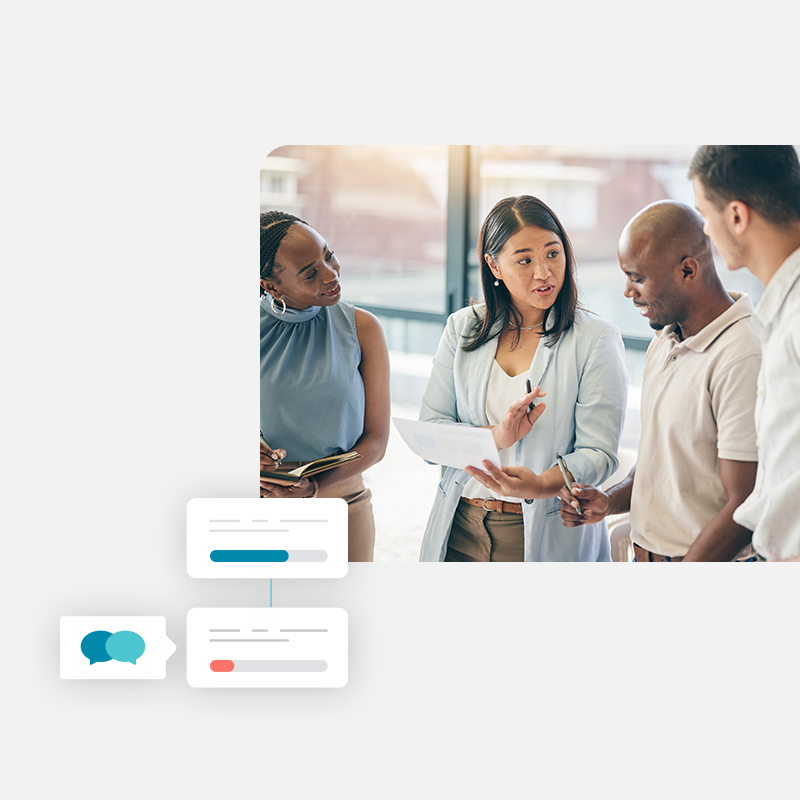Between operational demands and a dynamic, ever-evolving marketplace, something as straightforward as employee engagement (EE) surveys are often overlooked or undervalued, especially when conducted in an inefficient, old-fashioned manner. As paradigms shift and the war for talent intensifies, an effective EE survey system could very well be the difference between an organization that is able to retain their best talent and flourishes versus one that is constantly bleeding their best people and battling for survival.
EE Surveys: What Are They and How Can They Help?
Employee engagement surveys establish a framework for companies to better understand how engaged and satisfied their employees are, and the key drivers of engagement. They can significantly enhance the flow of communication that often inhibits the true and thorough understanding of how employees feel about their individual jobs and responsibilities as well as the overall company itself.
Traditional survey models have only provided supervisors a perfunctory view of satisfaction within their workplace as they were only occasionally sent out, were often laborious to complete and typically required months to process. Of course, this eliminates any semblance of immediacy and only provides management a lacking, outdated perspective of the workforce and overall contentment.
To maximize the insight and impact from EE surveys, they should be part of a larger feedback initiative that is constant and fluid in nature. In-depth surveys should always be accompanied by frequent and brief polls to obtain a quick pulse on various employee experiences. A place for open-ended, bottom-up employee feedback is also critical in allowing workers to voice their opinions and ideas in real time.
Refine the EE Survey Process for Maximum Impact
Supplementing broad, less-frequent survey campaigns with subsequent, smaller EE surveys can provide the refined, real-time feedback that allows an agile company to make necessary changes as they arise rather than waiting for them to become larger systemic issues. The smaller, more frequent EE surveys should focus on such topics as:
- Collaboration and Communication
- Company Confidence
- Current Initiatives
- Feedback and Recognition
- Leadership
- Learning, Training and Development
- Management
- Program Feedback
- Social Connection
- Teamwork and Ownership
- Balance Between Work and Life
 Creating the Ultimate EE Survey
Creating the Ultimate EE Survey
Designing an effective EE survey framework doesn’t have to strain your finite resources. In fact, following a few straightforward guidelines can help an organization establish survey procedures that will provide it the transparent data points and immediacy needed to optimize the employee experience.
First and foremost, make the surveys easy to take. Employees are extremely busy and can easily view a long and cumbersome survey as a chore rather than an opportunity to voice their opinions. Ensuring that surveys are not unnecessarily long and ensuring employees can answer these on the go using their mobile phones can significantly increase the participation rate and the richness of the data.
Similarly, don’t overuse the standard Yes/No questions that EE surveys have traditionally relied upon. Your workplace is not binary so your surveys should provide greater mobility in structure, thus affording supervisors greater levels of insight. For instance, using the Likert Scale rather than a constraining Yes/No format allows users to place their responses within a range of possible answers – often ranging between 5 and 7 choices – thus removing the rigidity that rarely mirrors real world situations and environments.
Establishing a distinct set of goals for what you want to learn and define is essential when establishing the questions for the different categories. Be deliberate and well-organized when writing the category questions.
To help with this, we’ve created the Betterworks Engage Employee Engagement Survey Template to serve as a baseline to start building your own EE survey. It includes survey example questions around various engagement categories & goals every company should be focused on.
Take Full Advantage of the Results
Even the most thorough of EE survey procedures do you little good if the results are not quickly and effectively processed to identify needed changes. In fact, processing the results is the most important and, often, most difficult part of the process.
Far too often, months will pass without employee issues being understood or addressed. When survey results are eventually analyzed and a reactive action plan is put in place, HR usually doesn’t have an easy way to track and understand how their plan is working. Additionally, they are often are unable to connect results from previous surveys to understand employee engagement trends. Given an increased emphasis and expectation of robust people analytics, these are all major challenges HR must address.
With an employee feedback solution like Betterworks Engage as a partner, HR and management can rely on real-time access to data as it’s available, insightful innovations like machine learning, algorithm-based sentiment analysis to gauge areas of positivity and negativity within the company, and smart dashboards to identify trends and pinpoint exactly where improvement is needed. More importantly, however, solutions such as Betterworks Engage make it possible for your leaders and managers to also review the data associated within their teams without any additional manual work.
The Ordinary Can Create the Extraordinary
While employee engagement surveys are commonplace throughout most industries, the biggest challenge is drawing insights from them. In tandem, organizations also to create an open feedback culture that is constantly collecting data points, analyzing the resulting metrics and leveraging those insights they provide.
The overarching goal of such efforts is for companies to establish themselves as employers of choice rather than necessity. When this sort of healthy, communicative culture is fostered and maintained, an employer can preserve valuable resources that otherwise would have been consumed by attrition and recruiting. Instead, companies can refocus their attention on the operational and performance goals that benefit everyone involved over the longer-term.


